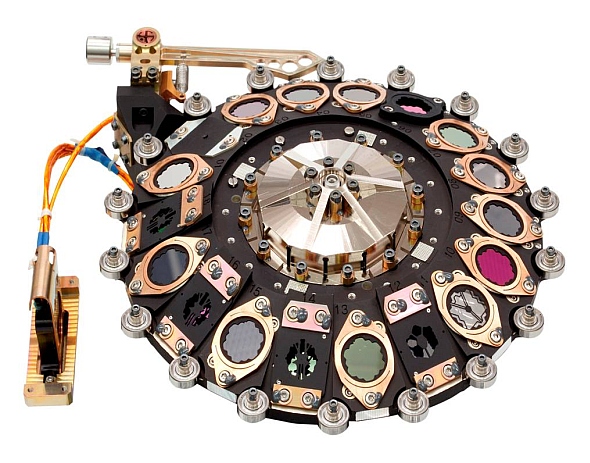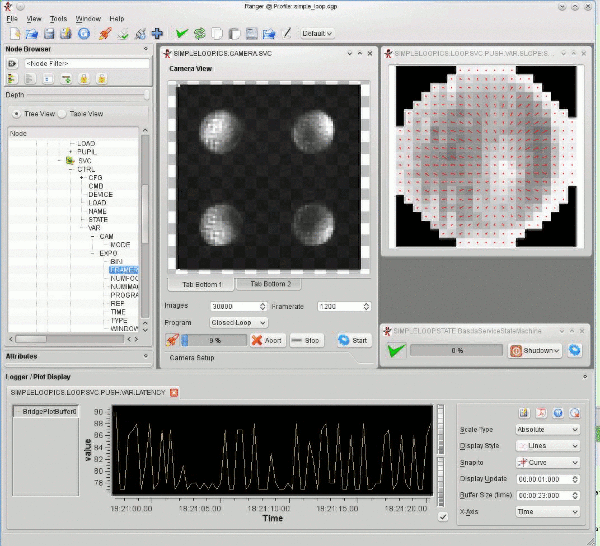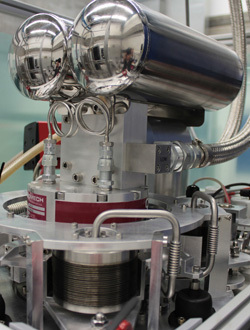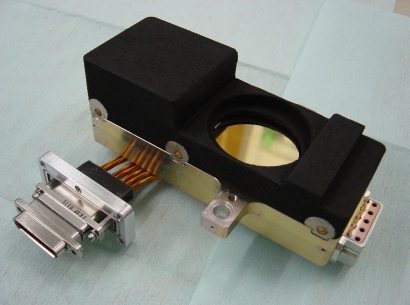| Version 396 (modified by , 5 years ago) (diff) |
|---|
The AstroTechTalk (ger) offers a place to discuss, for all interested colleagues and especially for the technical departments, the project leaders, the administration and the scientists as the ultimately users:
- status of instrumentation projects
- scientific tasks and features of the instruments in construction or planned
- new possible involvements
- technical innovations and developments
- technical problems and their solutions
- logistical problems and their solutions
- how to improve operation and observation
- project standards.
Time: Always Fridays 11:00 - 12:00 (during the construction work: 10:00 - 11:00)
Location: MPIA Hoersaal (during the construction work: HdA Auditorium)
Outline:
- Announcements (news, visitors, etc.) (mainly in German)
- Talk of about 30 min about a selected topic (German or English, will be announced)
- Follow up discussion and questions (German or English, depending on the speaker)
Proposals for talks: Please send an email to "hofferbert -at- mpia.de" or "naranjo -at- mpia.de" - alternatively you might reach us by phone (06221-528209 or -290) or in person (room 211 or 018) at MPIA.
| Date | Speaker | Topic |
| 04.01.2019 | -- | Christmas Break |
| 11.01.2019 (11hrs, MPIA Hoersaal) | Carlos Correia (LAM) | Making it up to E(A)LT's: Extremely (Adaptive) Large Telescopes Observations with giant segmented ground telescopes promise to revolutionise VIS and NIR astronomy. Yet, to take full benefit of the collecting power, resolution (and sensitivity) of these huge machines, adaptive optics systems are key and are poised to become mainstream. They are to assist 100% of the observations, for ELTs are too large to operate as conventional seeing-limited telescopes. Carlos Correia will provide an overview of current developments on novel wave-front sensing techniques using natural and laser guide stars, advanced wave-front reconstruction for the different AO modes and the challenges faced when customising AO post-processing in order to meet stringent science goals. Furthermore, he will show how these developments are propelling the design of HARMONI, the European Extremely Large Telescope's 1st light IFU. Presentation: English Slides: English Questions: German, English |
| 18.01.2019 | ||
| 25.01.2019 (11hrs, HdA Auditorium) | Martin Kürster | Double Feature: (1) Introduction of project NTE MPIA has joined a project for a new instrument for the Nordic Optical Telescope (NOT) on La Palma, called NOT Transient Explorer (NTE). It will provide medium resolution optical/NIR spectroscopy and imaging in a rapid response mode to catch transient astronomical phenomena as fast as possible. The consortium building the instrument is led by the Niels Bohr Institute in Copenhagen who have asked MPIA to provide NTE with our in-house read-out electronics (ROE) for its NIR cameras, i.e. two systems for the imaging and spectroscopic channels plus one spare unit. For us, this is a unique opportunity to bring our ROE to a new facility and continue contributing our special expertise in this field. (2) CARMENES finds Super-Earth at Barnard's Star - after all Up until the 1990s astronomical textbooks claimed that two Jupiter-like planets were orbiting Barnard's star, the closest single star to the Sun. This claim was based on astrometric measurements, which determine the reflex motion of a star caused by the gravitational pull of its planets. More precise observations demonstrated later that these planets do not exist and that the apparent motion of the star had been caused by uncorrected instrumental effects. Actually, until today, the astrometric technique has not found a single exoplanet. Recently though, the well-established radial velocity method has led to a new exoplanet claim around Barnard's star, a cold Super-Earth, the first of its type near the snow line of its system. This difficult discovery was made possible by combining data from seven instruments among which CARMENES was a key player. It will require independent confirmation, expected to come after 2021 from the most precise astrometric measurements ever to be provided by the final release of data from the GAIA satellite. Presentation: German Slides: English Questions: German, English |
| 01.02.2019 | ||
| 08.02.2019 | ||
| 15.02.2019 | Vianak Naranjo | Status Update: construction work in MPIA basement |
| 22.02.2019 | ||
| 01.03.2019 | ||
| 08.03.2019 | ||
| 15.03.2019 | ||
| 22.03.2019 | Noah Schwartz (ATC) | TBD |
| 29.03.2019 | ||
| 05.04.2019 | Robert Harris (ZAH, LSW) | A multi-core integral field unit (MCIFU) instrument: Finding disks and planets using single mode fibers |
| 12.04.2019 | ||
| 19.04.2019 | -- | Good Friday |
| 26.04.2019 | -- | Easter Break |
Preview:
DD.MM.2019 - Speaker: Title
Postview:
Presentations from 12.09. - 31.12.2014
Presentations from 01.01. - 31.07.2015
Presentations from 01.08. - 31.12.2015
Presentations from 01.01. - 31.07.2016
Presentations from 01.08. - 31.12.2016
Presentations from 01.01. - 31.07.2017
Presentations from 01.08. - 31.12.2017
Presentations from 01.01. - 31.07.2018
Attachments (11)
- instrum8_gr.jpg (82.6 KB) - added by 10 years ago.
- instrum4_gr.jpg (104.4 KB) - added by 10 years ago.
- pedv3_gr.jpg (213.9 KB) - added by 10 years ago.
- alfa3.5.gif (235.6 KB) - added by 10 years ago.
- CIAO.jpg (3.8 MB) - added by 8 years ago.
- linc_nirvana_labor.jpg (255.2 KB) - added by 8 years ago.
- MATISSE.jpg (43.1 KB) - added by 8 years ago.
- miri_fm_filterwheel.jpg (145.6 KB) - added by 8 years ago.
- PACS-Chopper.jpg (80.0 KB) - added by 8 years ago.
- simple_loop.gif (965.4 KB) - added by 8 years ago.
- teaser.jpg (13.5 KB) - added by 8 years ago.
Download all attachments as: .zip







